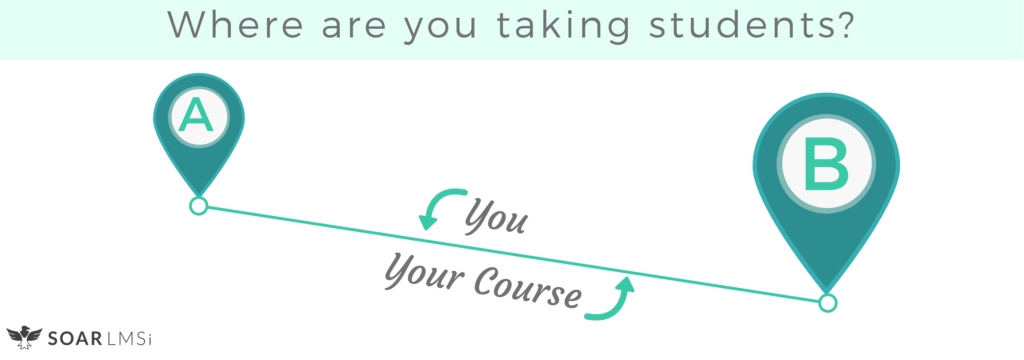Define Your Target Market for a Focused Foundation for Your Course
Defining Your Target Market: A Focused Foundation for Your Course
Today’s meaning of "target" is a key factor in your online course success.
One of the biggest mistakes aspiring content marketing folks could make is to try to appeal to everyone. Focusing on a target market, much like a dart board, will allow you to have a greater chance of “landing” a course sale, instead of hitting the wall all around it.
In regard to your brand, you may have heard talk of knowing your niche, identifying your tribe, community focusing, client focus or any other number of names, but they all convey the same thing.
Creating your course to educate, sell, or enhance offerings is no different! So to make sure you have course success from the beginning, take the time to clarify your target for students. The first step in defining your most profitable course topic is defining your target market. This means determining the kinds of people you will be trying to attract to your course.
You will be SO incredibly glad you did this in the beginning because:
- It funnels your marketing efforts in the right direction
- Helps you write converting copy and create content that resonates strongly with your audience
- Create specific courses that will sell and easily build a series
- You can ask a premium price because you’re a specialist
- Helps you to cut marketing cost
This means determining the kinds of people you will be trying to attract to your course. These are the people most likely to enroll in your course. Determining this target market will help choose where and how you promote your course. You want your time and money to be spent wisely when marketing your course.
Get the full target market discussion and other marketing tips in SOAR LMSi’s FREE marketing success guide here.
There are three major steps in defining your target market:
- Determining what you want to help people accomplish
- Creating a buyer persona
- Using the buyer persona
1. Determine What You Want to Help People Accomplish
The number one reason people seek out new information is to solve a problem. They might be feeling unfulfilled and looking for a purpose, such as a mission trip. Their marriage might be suffering and they are looking for help. Perhaps they’re unsatisfied with store-bought produce and want to learn to grow their own. Or they might feel drawn to a language, such as French or Spanish, but never had the chance to learn it.

What problem is your course trying to solve? What do you want people to accomplish after they finish the course? These are questions that must be answered. They will lead you to the types of people you will want to market to.
2. Create a Buyer Persona
After you know the problem you are trying to solve, it’s time to determine the type of individual who needs that problem solved. This is where a buyer persona comes in. A buyer persona is a profile of your ideal client. Once you know who this ideal client is, you can customize your online course for them.

A buyer persona should include:
- Name: This may be a hypothetical person, but you want to feel a connection with them, so give them a name.
- Age: What is the ideal age for your client? It can be an estimate within a certain age range.
- Location: Where does your client live? Since your course is online, your client could live anywhere, but think about the kind of place where they are likely to live – big city, small town, Midwestern farm, etc.
- Gender: Are men or women more likely to buy your course? Are you targeting to both? If so, you may want to consider creating two separate buyer personas: one male, one female.
- Relationship Status: Is your ideal client married, dating, or single? The topic of the course may help determine this – for instance, a course aiming to help resolve issues in a marriage would be of no value to single or dating individuals. It would clearly be marketed to married couples.
- Interests: What interests might your ideal client enjoy? Again, the topic could help inform you on this. A course about a mission trip or learning a new language could tell you a lot about the client taking it.
- Education Level: What level of school has the client completed?
- Occupation: What types of jobs have they held and what industry are they involved in? Their industry may influence the types of courses they would be interested in.
- Income: What is the income range of your ideal client? If they make just enough to survive on, they likely will not have extra to spend on online courses.
- Language: What languages does your ideal client speak?
- Favorite Websites: Which websites does your ideal client frequent the most? This includes social media. You want to market your course on the social media platforms where your target audience hangs out the most – how will they see you otherwise?
- Favorite Apps: Which apps does your ideal client use the most?
- Pain Points: What are your client’s pain points? This relates to the problem that they are trying to solve.
- Goals: What are your client’s goals? What are they hoping to accomplish?
You might be wondering where you get all this information. Do you make it all up? Not exactly. There are some sources you can consult to help you develop your buyer persona. They include:
- Competitors: Check out the social media pages and blogs of your top five competitors. Pay attention to likes, shares, and comments. Check out the profiles for these users – 20 for each competitor. Make note of any similarities you see and jot them down next to the above categories to include in your buyer persona. (Do research on competitor sites using SimilarWeb and Alexa. They both have free options)
- If you have a Facebook page, Facebook Insights will help you gain…well, insight.
- If you have a website, check out your Google Analytics Audience Reports.
- Ask your audience! Conduct a survey with questions relating to the above categories. You can use SurveyMonkey or Google Forms to accomplish this. You might consider including a reward for those who participate, such as coupons.
3. Use Your Buyer Persona
Now you’re all set to use your buyer persona. How do I use it, you ask? You let the information guide your content creation and marketing efforts. Let the persona be your compass you as you create your online course, letting it help you better empathize.

With a buyer persona, you can speak their language and focus on things that will strongly resonate with them. Perhaps there’s something you noticed that you should include. Or maybe there’s something that seems useless now and you want to remove it. Keep in mind your persona’s interests, goals, pain points, and websites when creating your course. You can also use this information as you start your marketing campaign.
Remember, though: your persona is not set in stone. As you learn more about your audience, your buyer persona will, and should, evolve. It’s a good idea to begin with a relatively broad persona and then narrow in on a more specific persona as you learn and grow.
Today’s action >>> Develop a Buyer Persona to Guide Your Online Course
A buyer persona can help you create a better online course by telling you exactly what a client is looking for. You get to know your clients and their interests and concerns. The persona also helps you concentrate your marketing efforts in the right places, so you don’t waste your time and energy marketing to people who don’t care. An effective buyer persona will set you up to tackle the next stage of marketing your online course: creating a blog.
Don’t do it alone! Enroll in a full, comprehensive, marketing course with a SOAR Consultant.



